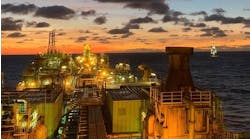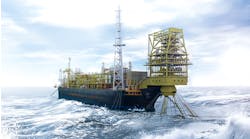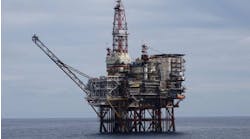Offshore staff
HOUSTON --Designing an optimal riser system requires facing a number of complex, severe challenges complicated by the fact that each riser serves a specific development, and there is little similarity among offshore design parameters.
This variety of application means industry has developed a number of approaches to riser systems to deal with greater water depths, harsh environments, HP/HT reservoirs, and involved drilling/production approaches. These systems include top-tensioned, steel catenary, flexible, integrated, and hybrid designs.
Even with that, some current development targets feature severe metocean conditions, ultra deepwater, extreme temperatures and pressures, and difficult physical and chemical properties of the production that exceed current technology.
A panel organized by INTECSEA addressed these challenges in a presentation at the Offshore Technology Conference in Houston today.
"Deeper and cheaper," is the mantra for today's riser design, said Pieter Wybro, deputy CEO and chief technology officer of INTECSEA. This is compounded, he said, by a shortage of riser designers and also of deepwater installation vessels. Some answers generate additional questions. Riserless systems can be half the size of a traditional riser, but well intervention then becomes an issue. Low-cost vessels designed for intervention present a different set of problems.
"Industry nudges the (technical) limits to meet the challenges," Wybro said, noting that advancements in design have been incremental rather than large jumps.
Looking at Cascade/Chinook, Craig Masson, the contract manager for those risers for Petrobras America Inc., said the industry needs more options for risers used with FPSOs in deepwater and hostile environments. He said for Cascade/Chinook with 8,000 ft (2,438 m) water depths and hurricane concerns, that hybrid risers appeared to be the best answer as that combined the strength of SCRs with the motion fatigue capacity of flexible pipe.
Even at that, there remain problems. Hybrid risers are expensive, have a long lead-time, and present logistical challenges.
Calvin Crossley, deepwater risers and pipelines manager, ExxonMobil Development Co., pointed out that attention to the technical fundamentals remained a requirement for operations in extreme conditions. That means sound engineering, analytical advances, testing, prototypes, performance monitoring, and continuous reassessment of the underlying assumptions was required. He said this attention to technical fundamentals combined with management of the remaining uncertainties would generate high-confidence solutions to riser system challenges.
A method to define a common frame of reference for riser design, or any other technology development, was offered by Jim Chitwood, ultra deepwater technology development manager for DeepStar and RPSEA. Chitwood described a Technology Readiness Level system to define the status of a new technology. The technique was drawn from a similar approach used by NASA to develop new systems that had to work correctly from the first application.
05/05/2009


